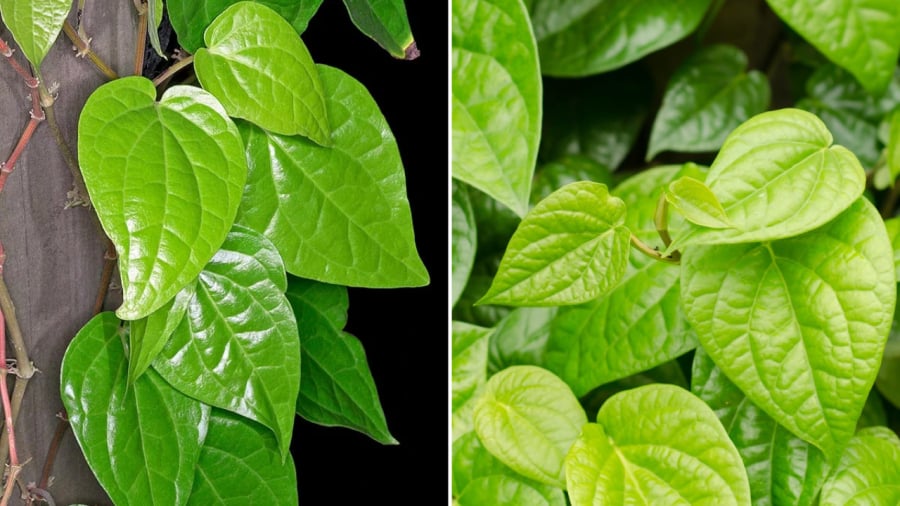Betel leaf, known as trầu không in Vietnamese, is a familiar plant in Vietnamese culture. These leaves are often paired with areca nuts and appear in traditional ceremonies, such as funerals, weddings, and ancestral worship during the Lunar New Year and death anniversaries.
Betel leaves are packed with bioactive compounds that offer various health benefits.
Benefits of Betel Leaves
According to Sức khỏe & Đời sống, a leading health and lifestyle publication in Vietnam, betel leaves can be harvested year-round and used fresh. Additionally, the roots of the betel plant are also utilized.
Betel leaves have a diverse chemical composition. They contain essential oils, betel-phenol, chavicol, eugenol, methyl eugenol, allylcatechol, and various vitamins and minerals.
Extracts from betel leaves and its essential oil have been found to inhibit several types of bacteria, including Streptococcus pneumoniae, hemolytic Streptococcus, Staphylococcus aureus, and Salmonella enterica, as well as exhibiting antifungal properties.
In traditional Vietnamese medicine, betel leaves are considered warm and pungent in nature, with a strong, distinctive aroma. They are believed to act on the lung, spleen, and stomach meridians, helping to ward off cold, descend qi, dispel wind-dampness, expel phlegm, sterilize, and reduce inflammation.
In India, betel leaves are used for mouthwash and poultices, treating lung-related conditions and hemorrhages. Extracts from these leaves are also incorporated into asthma medications.

Traditional Remedies Using Betel Leaves
- Wound Treatment
Combine equal parts betel leaves, Chromolaena odorata leaves, and Toona sinensis leaves, wash them, and gently pound to release their juices. Apply this mixture to the affected area.
Alternatively, boil 40 grams of fresh betel leaves in 2 liters of water for 15 minutes. Allow the solution to cool, strain, and add 8 grams of alum. Use this infusion to wash wounds.
- Treating Abscesses
To treat abscesses, use equal parts betel leaves, Hibiscus rosa-sinensis flowers, and Solanum torvum leaves. Wash and apply to the affected area.
- Relieving Dysuria
Combine 10 grams each of betel roots, leaves, and stems with areca roots. Wash and boil these ingredients to make a decoction. Drink this once daily until symptoms subside.
- Treating Dislocations and Sprains
Mix 12 grams of betel leaves, 20 grams of Curcuma longa leaves, 12 grams of Artemisia vulgaris leaves, and 12 grams of Saussurea involucrata leaves with a small amount of vinegar. Apply this mixture to the swollen and painful area and bandage it with gauze. Replace the dressing every 2-3 days.
- Treating the Common Cold
For a common cold, rub betel leaves along the spine, from top to bottom, to “dispel the wind.”
- Sore Throat Remedy
Blend betel leaves, Ocimum basilicum leaves, Mentha haplocalyx leaves, and ginger, and extract the juice. Mix this juice with honey to taste and gargle to soothe a sore throat.
- Skin Conditions: Insect Bites, Prickly Heat, Ringworm, and Eczema
Take a handful of betel leaves, wash them, and pound them into a paste. Mix this paste with cooled boiled water and use it to wash the affected area to relieve itching.
While betel leaves offer a range of traditional medicinal benefits, it is essential to consult a healthcare professional before using them as a treatment to ensure safety and avoid any potential side effects or complications.

































